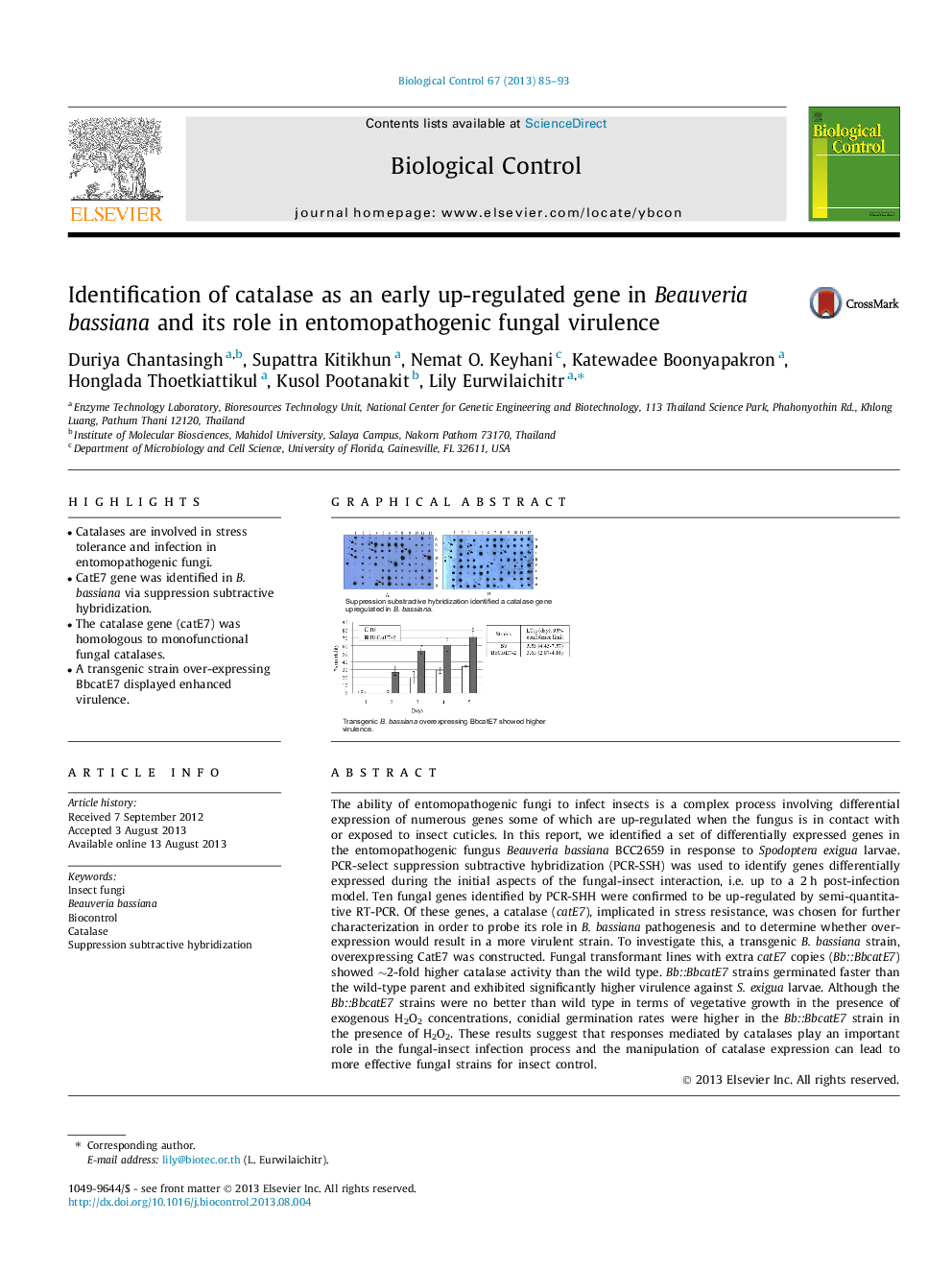| کد مقاله | کد نشریه | سال انتشار | مقاله انگلیسی | نسخه تمام متن |
|---|---|---|---|---|
| 4504036 | 1321054 | 2013 | 9 صفحه PDF | دانلود رایگان |

• Catalases are involved in stress tolerance and infection in entomopathogenic fungi.
• CatE7 gene was identified in B. bassiana via suppression subtractive hybridization.
• The catalase gene (catE7) was homologous to monofunctional fungal catalases.
• A transgenic strain over-expressing BbcatE7 displayed enhanced virulence.
The ability of entomopathogenic fungi to infect insects is a complex process involving differential expression of numerous genes some of which are up-regulated when the fungus is in contact with or exposed to insect cuticles. In this report, we identified a set of differentially expressed genes in the entomopathogenic fungus Beauveria bassiana BCC2659 in response to Spodoptera exigua larvae. PCR-select suppression subtractive hybridization (PCR-SSH) was used to identify genes differentially expressed during the initial aspects of the fungal-insect interaction, i.e. up to a 2 h post-infection model. Ten fungal genes identified by PCR-SHH were confirmed to be up-regulated by semi-quantitative RT-PCR. Of these genes, a catalase (catE7), implicated in stress resistance, was chosen for further characterization in order to probe its role in B. bassiana pathogenesis and to determine whether over-expression would result in a more virulent strain. To investigate this, a transgenic B. bassiana strain, overexpressing CatE7 was constructed. Fungal transformant lines with extra catE7 copies (Bb::BbcatE7) showed ∼2-fold higher catalase activity than the wild type. Bb::BbcatE7 strains germinated faster than the wild-type parent and exhibited significantly higher virulence against S. exigua larvae. Although the Bb::BbcatE7 strains were no better than wild type in terms of vegetative growth in the presence of exogenous H2O2 concentrations, conidial germination rates were higher in the Bb::BbcatE7 strain in the presence of H2O2. These results suggest that responses mediated by catalases play an important role in the fungal-insect infection process and the manipulation of catalase expression can lead to more effective fungal strains for insect control.
Figure optionsDownload as PowerPoint slide
Journal: Biological Control - Volume 67, Issue 2, November 2013, Pages 85–93